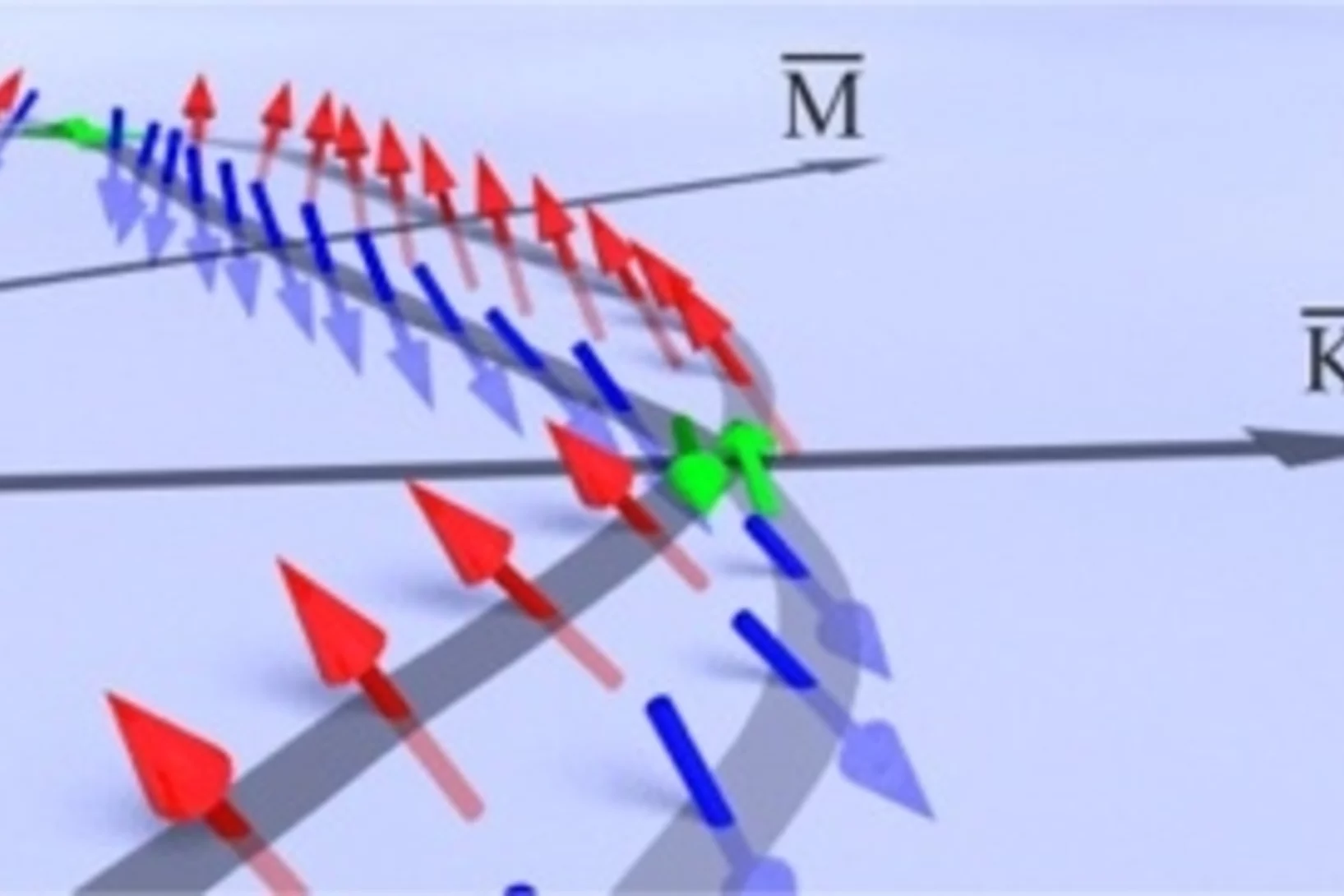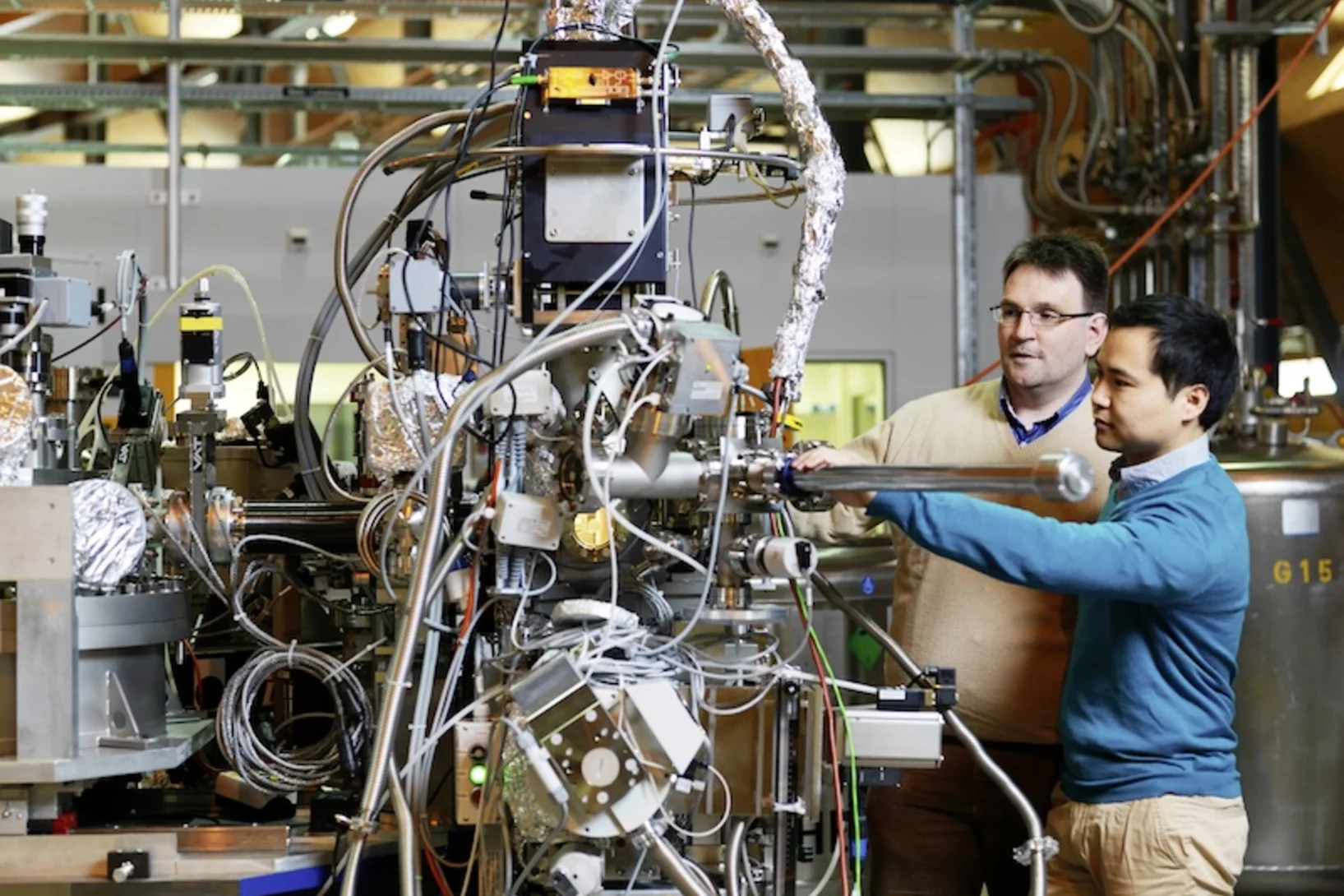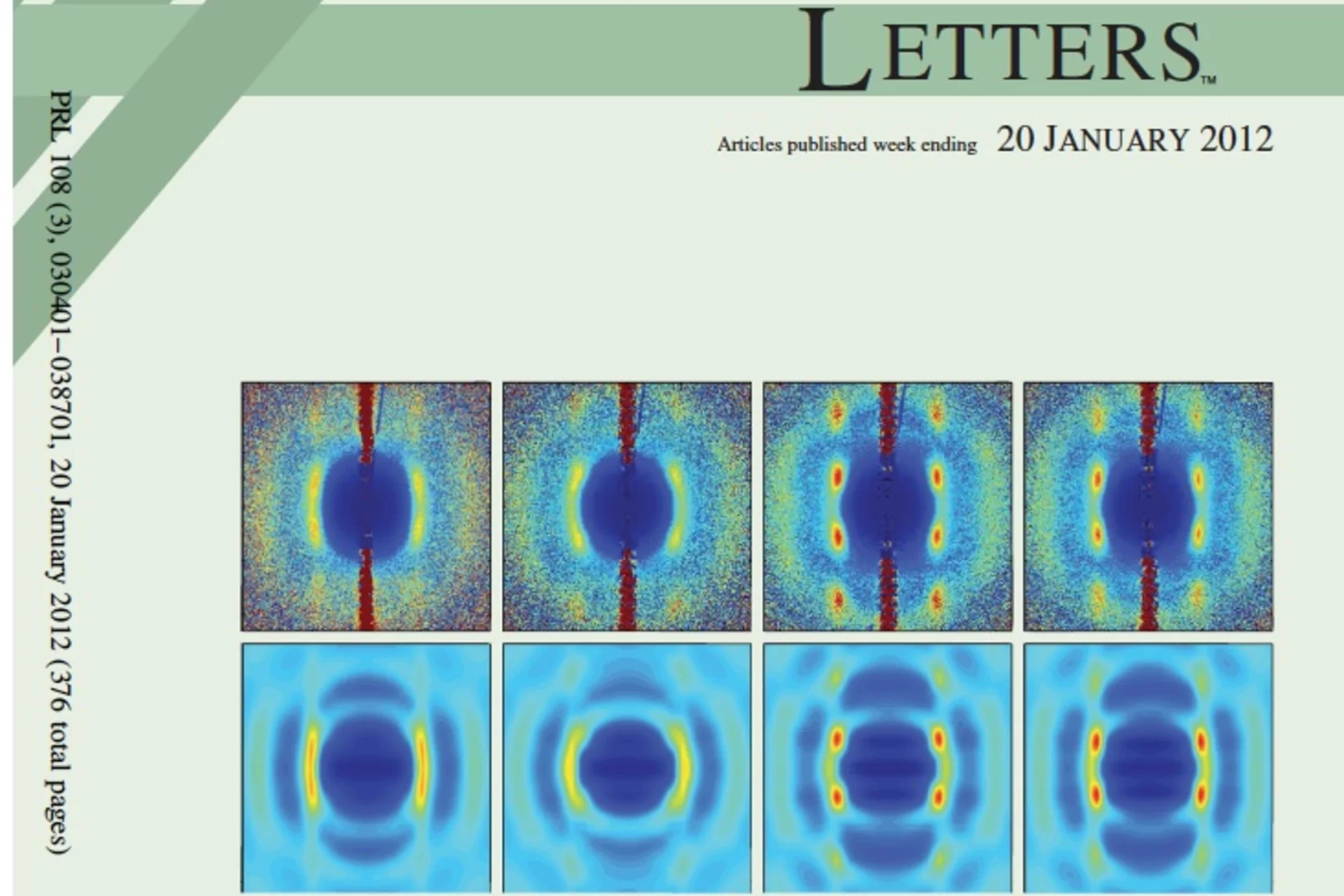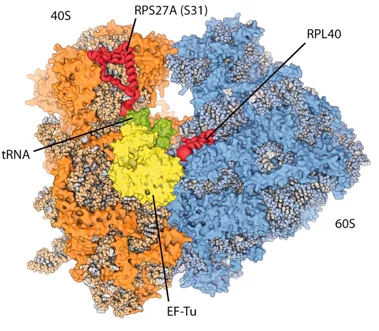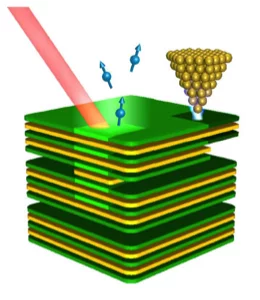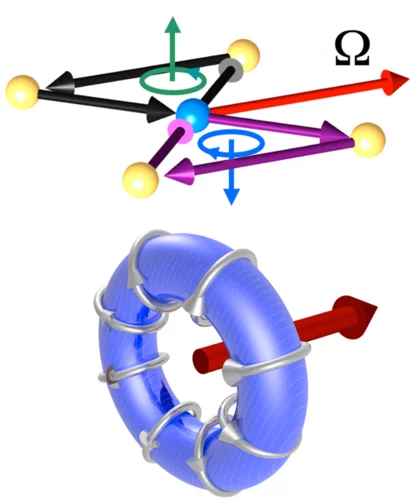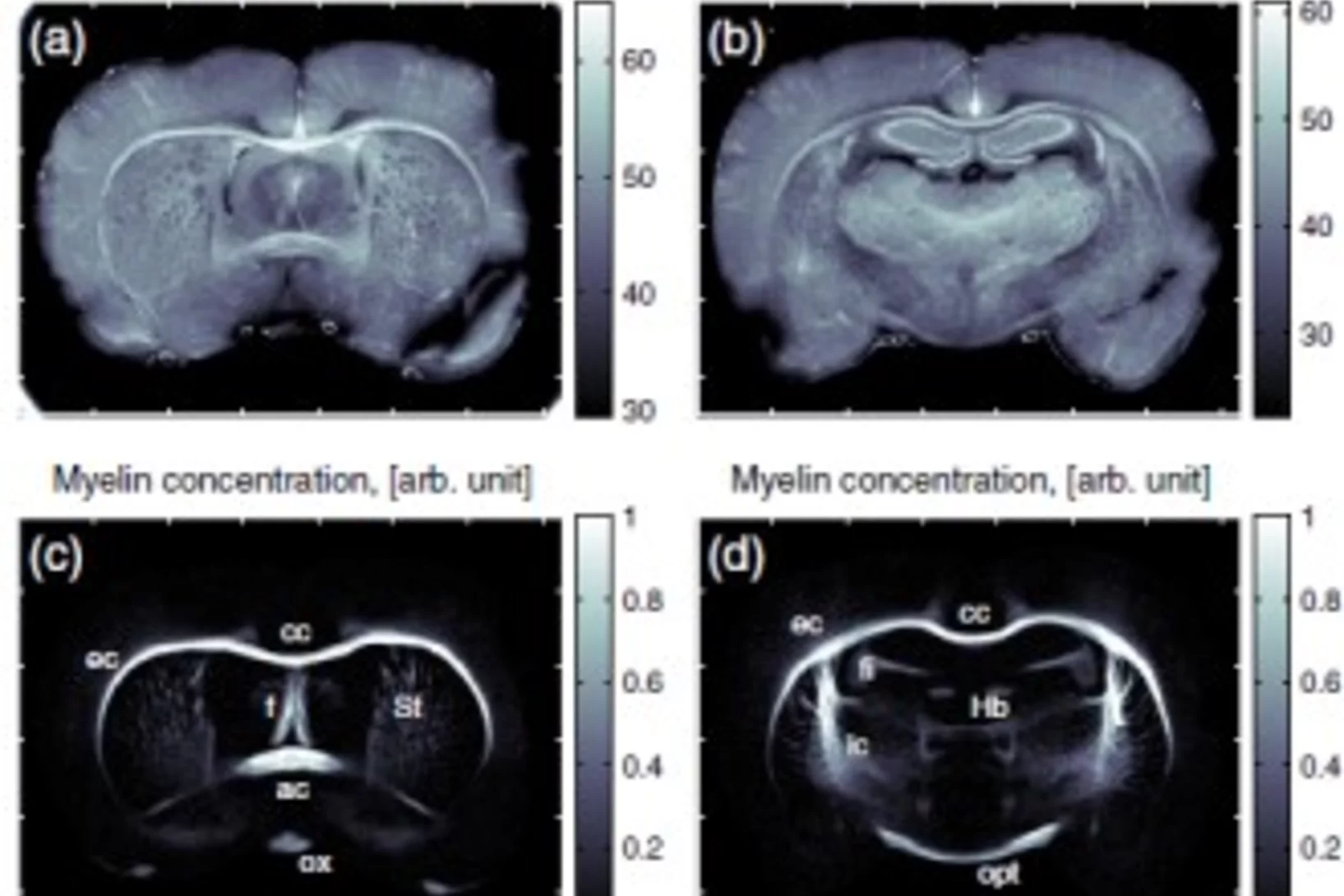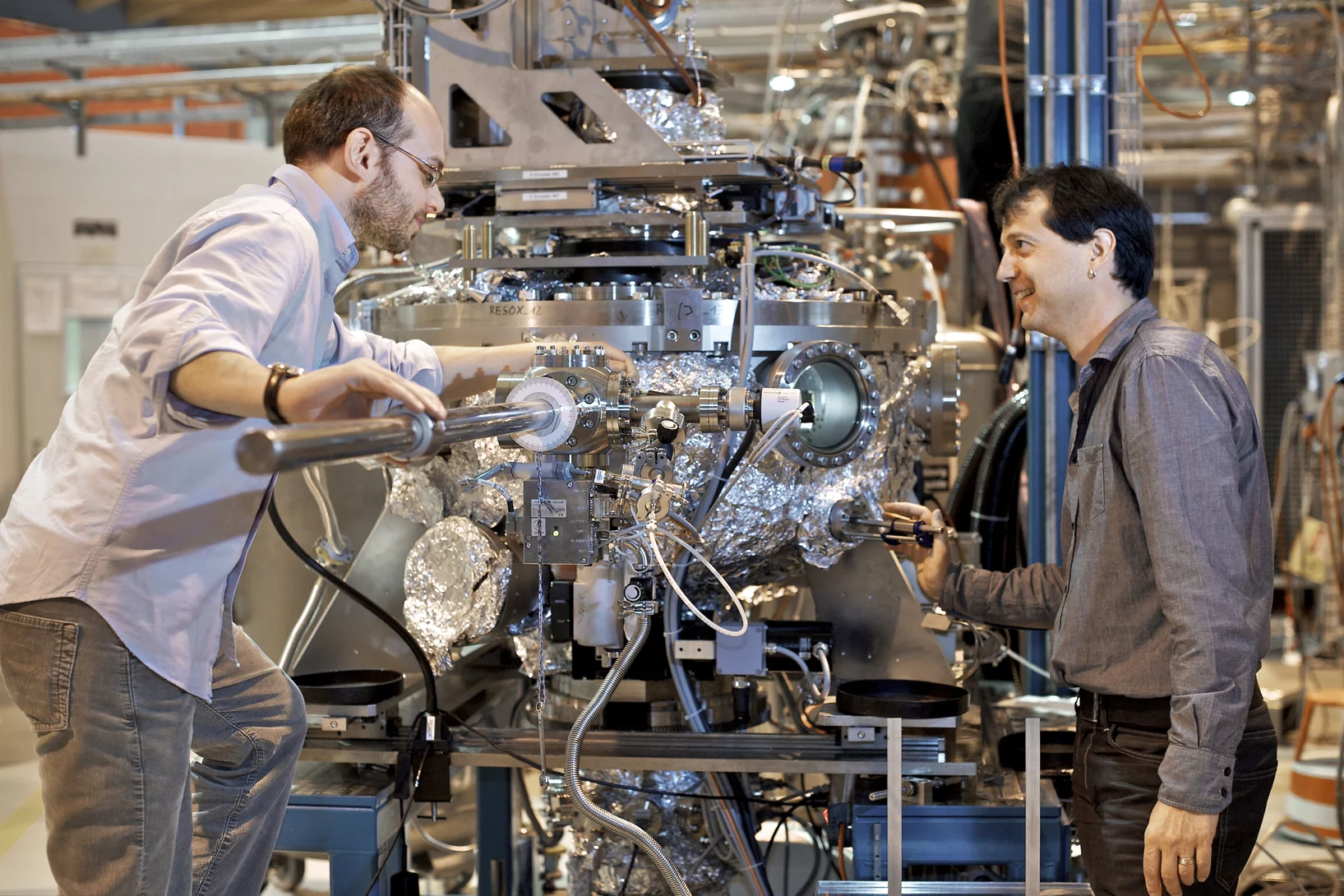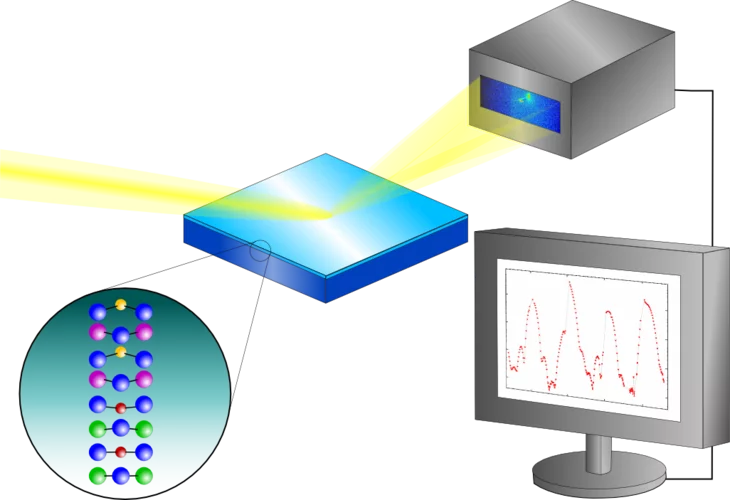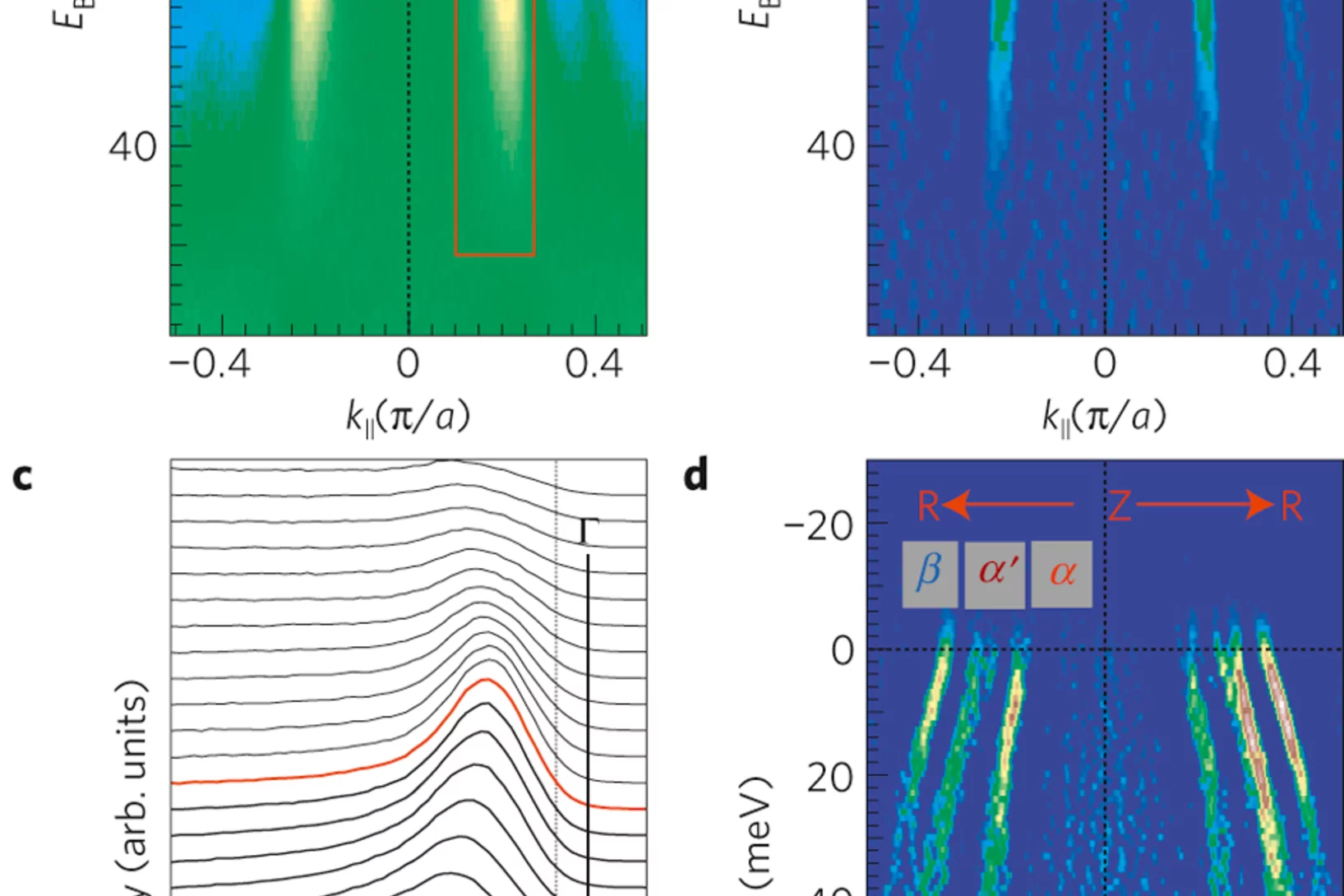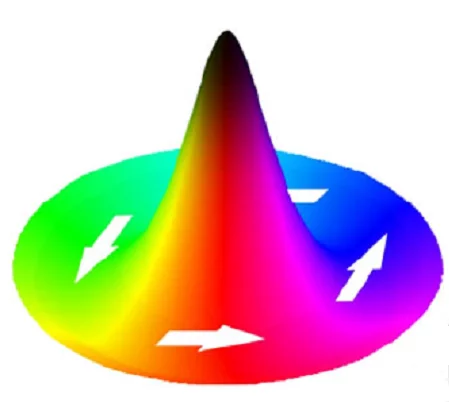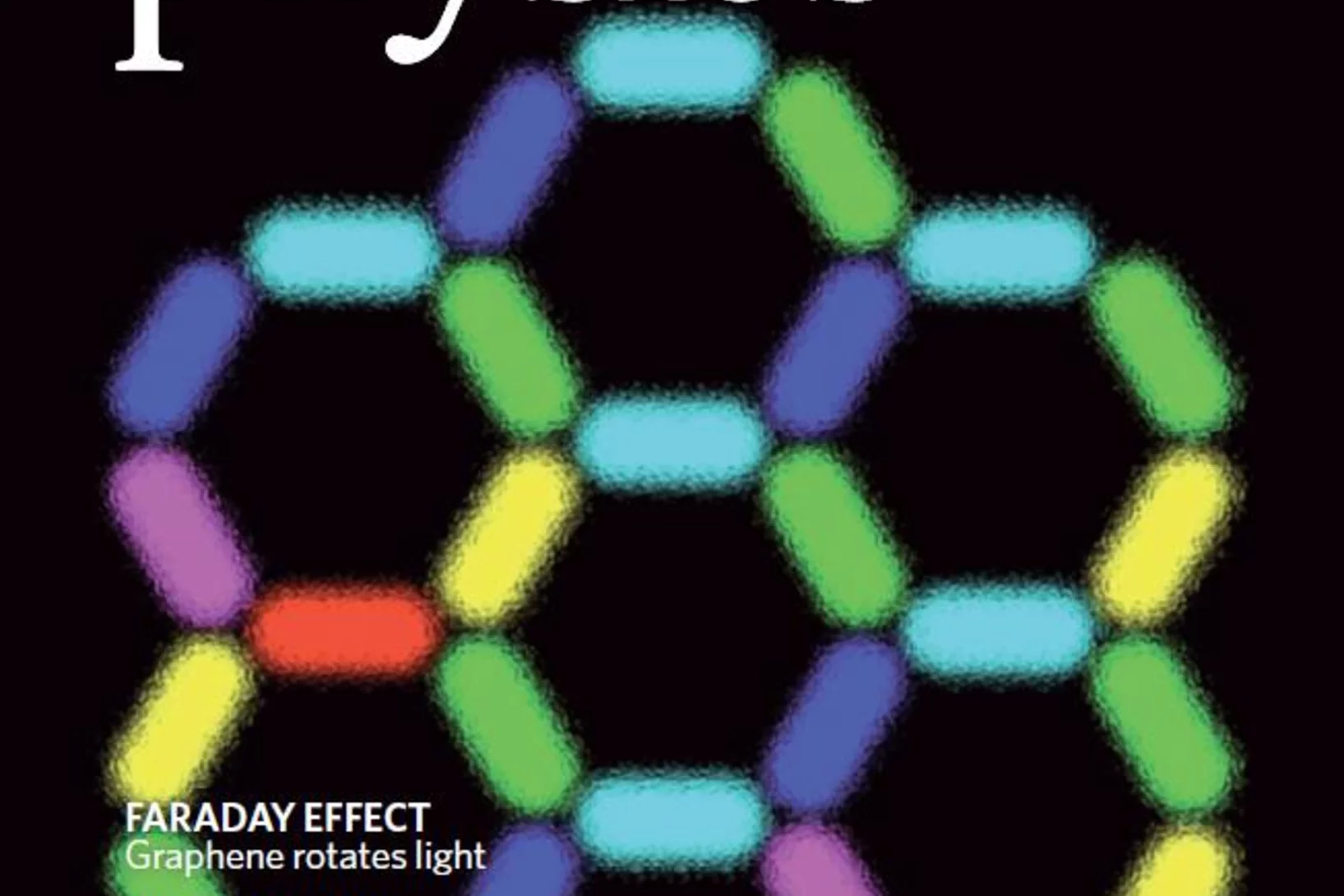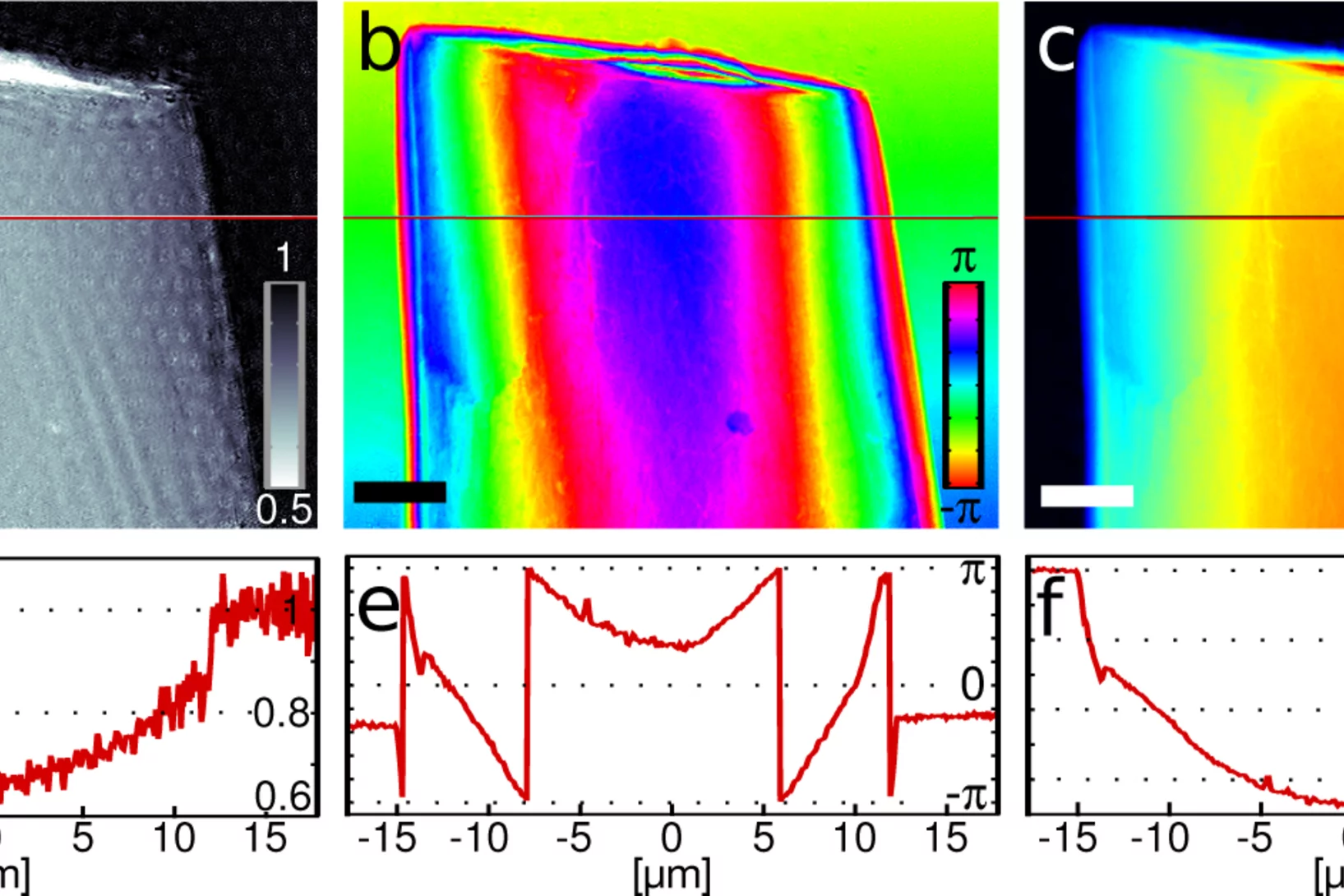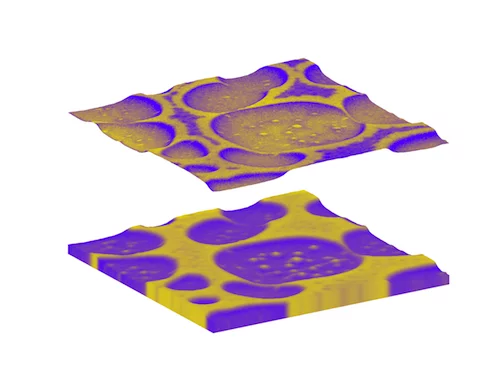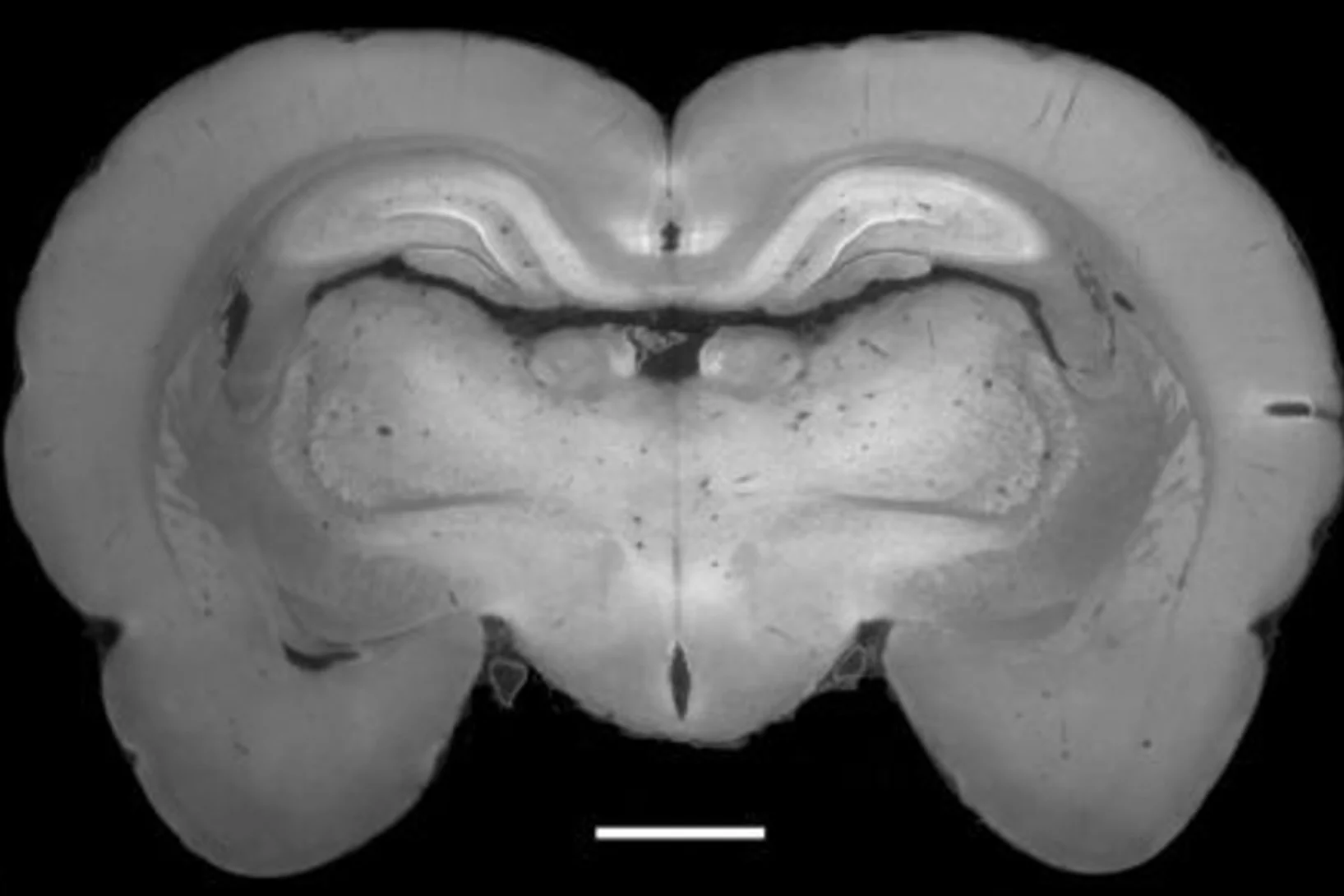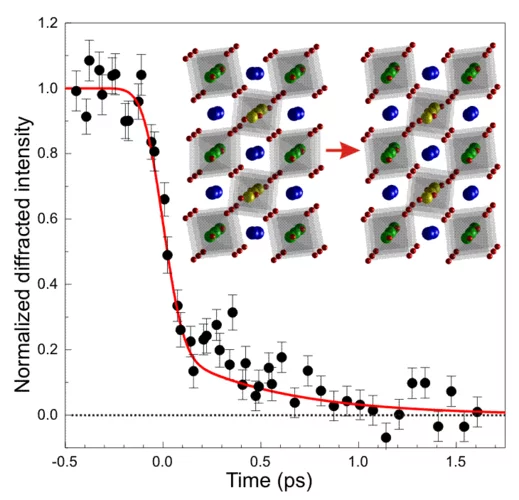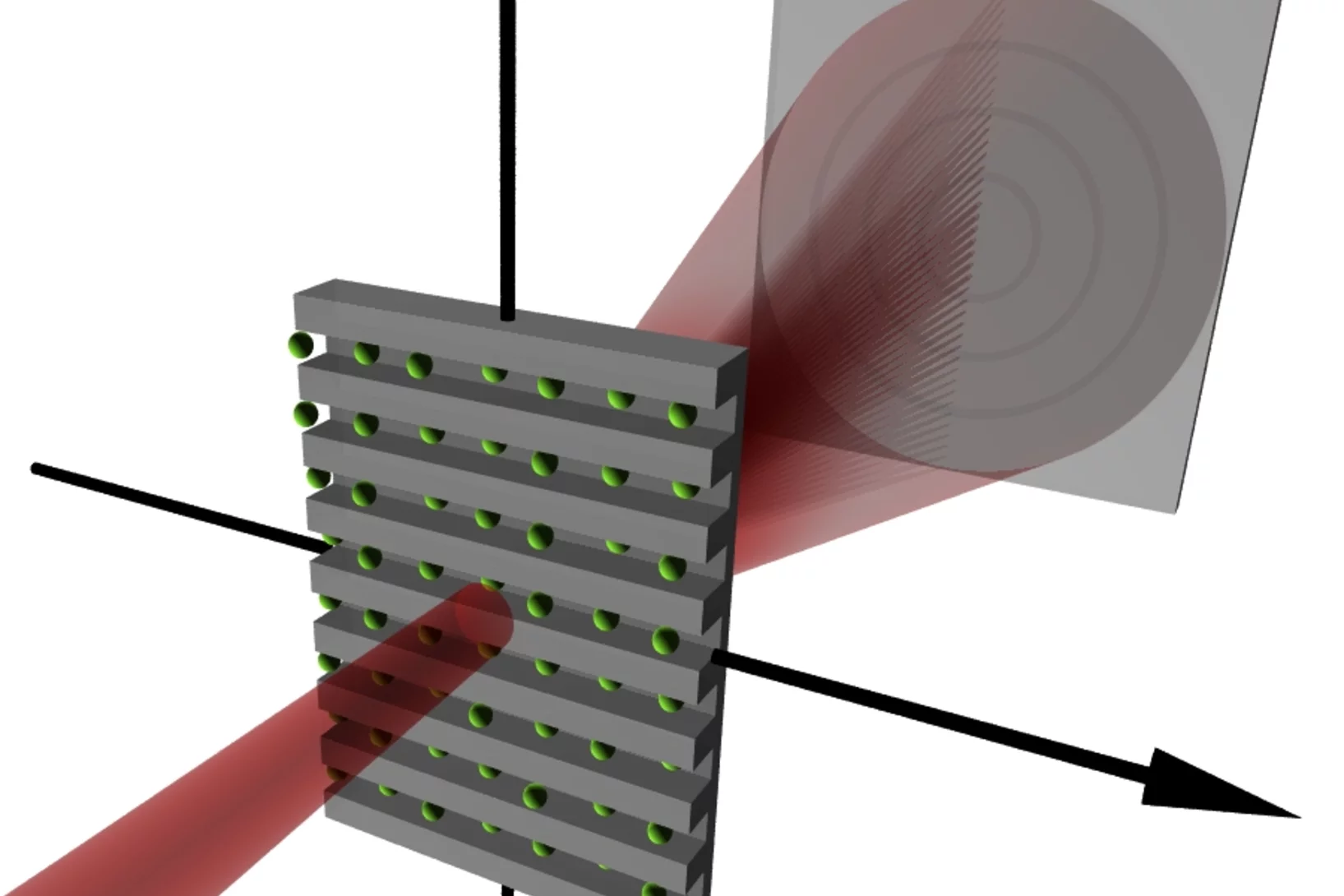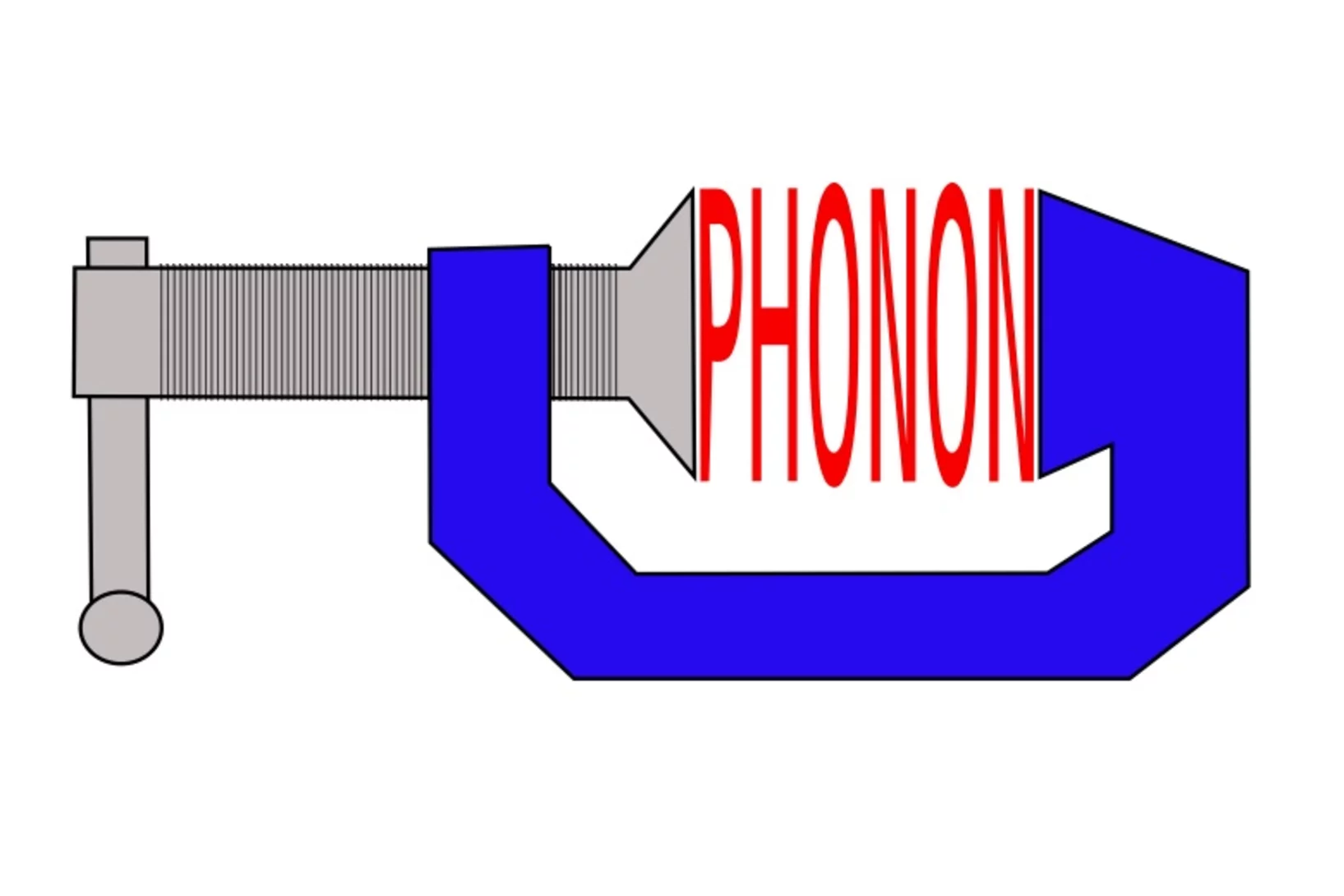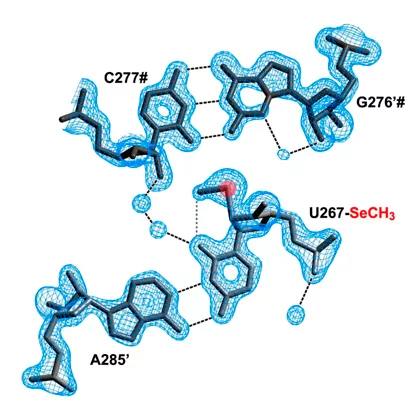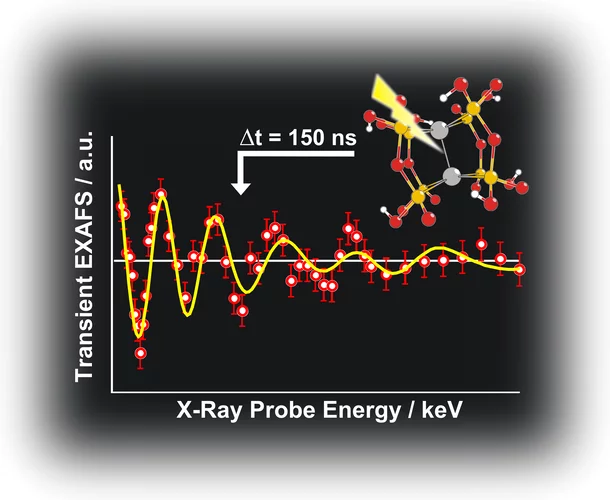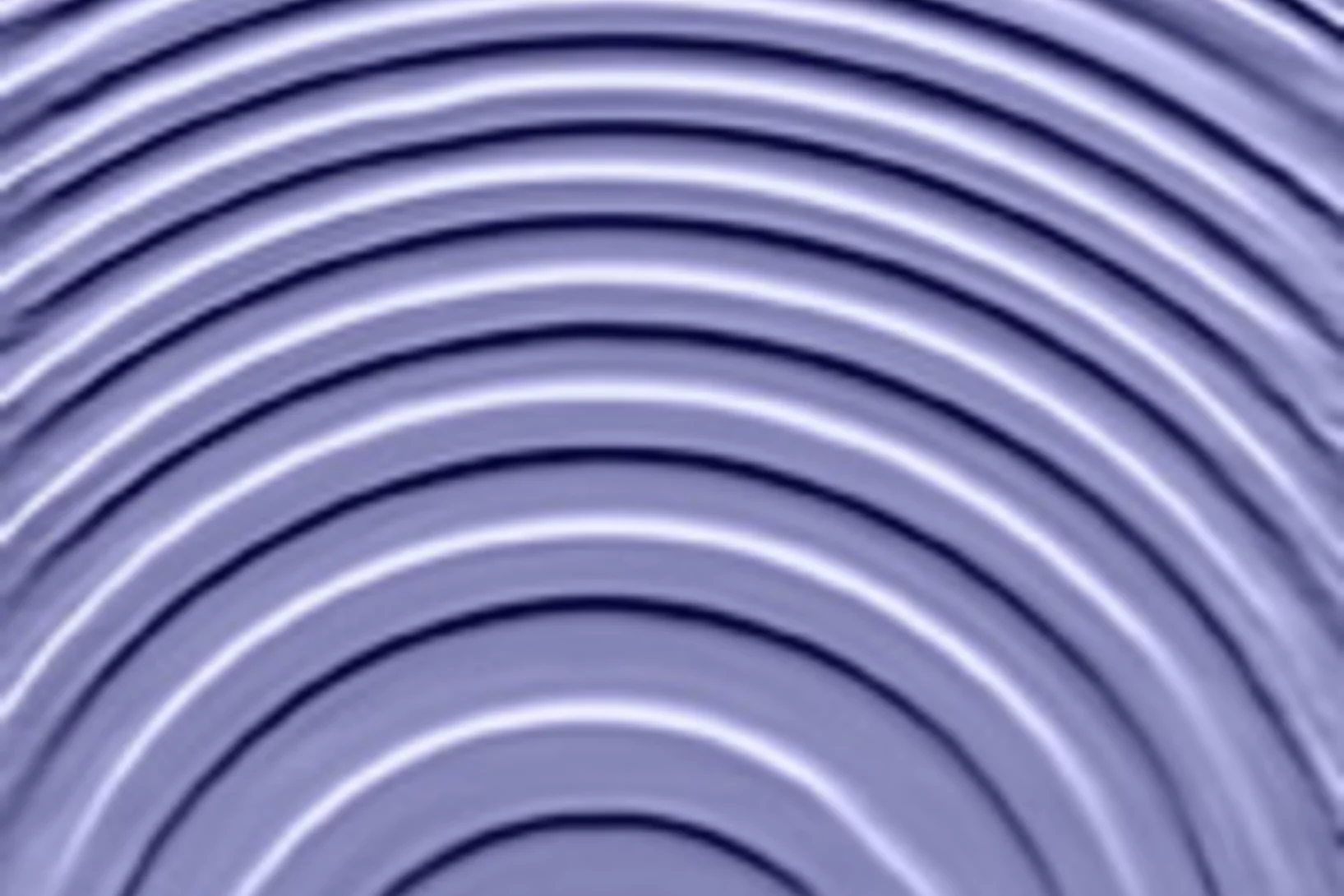Show filters
Three-Dimensional Spin Rotations in a Monolayer Electron System
In the emerging field of spintronics, the generation, injection, and in particular the control of highly spin polarized currents are main issues to be solved. Lifting of spin degeneracy by the spin-orbit interaction at surfaces, known as Rashba effect, represents a promising approach, since it generates two spin-polarized bands without the necessity of an external field. In our recent study, we realize such a system for a metallic surface layer on a semiconductor: Au/Ge(111).
Physicists observe the splitting of an electron inside a solid
An electron has been observed to decay into two separate parts, each carrying a particular property of the electron: a spinon carrying its spin – the property making the electron behave as a tiny compass needle – and an orbiton carrying its orbital moment – which arises from the electron’s motion around the nucleus. These newly created particles, however, cannot leave the material in which they have been produced.
Creating magnetism takes much longer than destroying it
Researchers at the Paul Scherrer Institute are finding out how long it takes to establish magnetism and how this happens.
Origin of the Large Polarization in Multiferroic YMnO3 Thin Films
Multiferroic materials have attracted much interest because of their ability to control magnetism by the application of an electric field. This ability is expected to reduce the power required by electronic devices and to increase their speed. However, the number of multiferroic materials discovered so far has been small, and ferromagnetism and ferroelectricity in the known materials are often much weaker than required for practical applications.
Liquids in narrow spaces
How does spatial confinement affect the microscopic structure of liquids?
This is a question which is receiving increasing attention from condensed matter physicists. Liquids are characterized by a short-ranged, so-called local structure, and it has been predicted theoretically about 25 years ago that confinement induces anisotropy in the local structure, and hence many properties, of liquids.
A close look at correlated electrons in heavy-fermion metal through ARPES
Showing astonishing properties like magnetism, superconductivity, Kondo and heavy-fermion (HF) behavior, rare-earth intermetallic compounds have been at the forefront of modern solid state physics for many years. Most of these properties are related to a delicate interplay between the partially filled 4f-shell and conduction electrons.
New insights into the cell’s protein factory
Eukaryotic ribosomes are among the most complex cellular machineries of the cell. These large macromolecular assemblies are responsible for the production of all proteins and are thus of pivotal importance to all forms of life. Two independent research groups at the ETH Zürich and the Institute of Genetics and Molecular and Cellular Biology in Strasbourg have obtained new insights into the atomic structure of the eukaryotic ribosome. The results have been published in the journal Science.
Bilayer manganites reveal polarons in the midst of a metallic breakdown
The origin of colossal magnetoresistance (CMR) in manganese oxides is among the most challenging problems in condensed- matter physics today. The true nature of the low-temperature electronic phase of these materials is heavily debated. By combining photoemission and tunnelling data, we show that in the archetypal bilayer system La2-2xSr1+2xMn2O7, polaronic degrees of freedom win out across the CMR region of the phase diagram.
Investigation of a new method for the diagnosis of cancer in breast tissue
Collaboration between research, hospital and industry aimed at transferring innovative procedure into daily practice.
Observation of Orbital Currents in CuO
Although high-temperature (Tc) superconductivity was discovered in the cuprates 25 years ago, there is still no consensus on its microscopic origin.
X-ray methods help to understand brain disorders better
An international team of researchers from Denmark, Germany, Switzerland and France has developed a new method for making detailed X-ray images of brain tissue, which has been used to make the myelin sheaths of nerve fibres visible. Damage to these protective sheaths can lead to various disorders, such as multiple sclerosis. The facility for creating these images of the protective sheaths of nerve cells is being operated at the Swiss Light Source (SLS), at the Paul Scherrer Institute.
The electron torus can help us to understand high-temperature superconductors
Paul Scherrer Institute researchers prove, for the first time, the existence of toroidal currents in solids
LaAlO3 - Buckling under pressure to hand over the charges
In this paper, we report on the change in the atomic structure of the conducting interface between the insulators LaAlO3 and SrTiO3 as a function of the LaAlO3 layer thickness. We discovered that the atoms at the interface buckle in an attempt to counteract the internal electric field produced when these two insulators touch one another.
Observation of a ubiquitous three-dimensional superconducting gap function in optimally doped Ba0.6K0.4Fe2As2
The iron-pnictide superconductors have a layered structureformed by stacks of FeAs planes from which the superconductivity originates. Given the multiband and quasi three-dimensional1 (3D) electronic structure of these high-temperature superconductors, knowledge of the quasi-3D superconducting (SC) gap is essential for understanding the superconducting mechanism.
Röntgenpreis for X-Ray research goes to Christian David
On 26th November 2010, Christian David, scientist at the Laboratory for Micro and Nanotechnology, received the Röntgenpreis for research in radiation science. David pioneered a method to enhance the quality of X-ray images. He received the award jointly with Franz Pfeiffer from Technische Universität München who worked closely together with him.
The award
Direct Determination of Large Spin-Torque Nonadiabaticity in Vortex Core Dynamics
We use a pump-probe photoemission electron microscopy technique to image the displacement of
vortex cores in Permalloy discs due to the spin-torque effect during current pulse injection. Exploiting the
distinctly different symmetries of the spin torques and the Oersted-field torque with respect to the vortex
spin structure we determine the torques unambiguously, and we quantify the amplitude of the strongly
Moving Monopoles Caught on Camera - researchers make visible the movement of monopoles in an assembly of nanomagnets
For decades, researchers have been searching for magnetic monopoles; isolated magnetic charges, which can move around freely in the same way as electrical charges – since magnetic poles normally only occur in pairs.
High-resolution method for computed nano-tomography developed
A novel nano-tomography method developed by a team of researchers from the Technische Universität München (TUM), the Paul Scherrer Institute (PSI) and the ETH Zurich opens the door to computed tomography examinations of minute structures at nanometer resolutions. The new method makes possible, for example, three-dimensional internal imaging of fragile bone structures. The first nano-CT images generated with this procedure was published in the renowned journal Nature on September 23, 2010.
Understanding plastic semiconductors better
New method allows important insights into polymer semiconductors
Semiconductors made from polymer materials are becoming increasingly important for the electronics industry – as a basis for transistors, solar cells or LEDs – showing important advantages when compared to conventional materials: they are lightweight, flexible and very cheap to produce.
New X-ray technique distinguishes between that which previously looked the same
A new method forms the basis for the widespread use of an X-ray technique which distinguishing types of tissue that normally appear the same in conventional X-ray images
Observation of a d-wave nodal liquid in highly underdoped Bi2Sr2CaCu2O8+δ
A key question in condensed-matter physics is to understand how high-temperature superconductivity emerges on adding mobile charged carriers to an antiferromagnetic Mott insulator. We address this question using angle-resolved photoemission spectroscopy to probe the electronic excitations of the non-superconducting state that exists between the Mott insulator and the d-wave superconductor in Bi2Sr2CaCu2O8+δ.
Watching atoms move: an ultrafast phase transition
One approach to advance our understanding of the complex interactions between different degrees of freedom in strongly correlated systems is to use time-resolved methods to study the response of a material after it has been driven out of equilibrium. Ultrafast optical techniques have demonstrated considerable potential to unravel the correlations that drive the interesting physics in such materials.
Confinement-Induced Orientational Alignment of Quasi-2D Fluids
Extreme confinement is known to induce ordering of the fluid, thereby affecting its properties.
Advanced phase contrast imaging using a grating interferometer
Conventional absorption based X-ray microtomography can become limited for objects showing only very weak attenuation contrast at high energies. However, a wide range of samples studied in biology and materials science can produce significant phase shifts of the X-ray beam and thus phase contrast X-ray imaging can provide substantially increased contrast sensitivity.
Electrons with opposite spins move in opposite directions
In one dimension, there are only two ways to move: left or right. This leads to some peculiar properties for one-dimensional systems on the atomic scale.
Putting the squeeze on phonons
Photon squeezing has been the subject of intense interest in the field of quantum optics, since it serves as a unique demonstration of the quantum nature of light. On a practical level, squeezing offers opportunities to make interferometric measurements much more precise than would normally be allowed by quantum uncertainty limits. In principle, the physics of squeezing may be applied to many different types of bosons.
A fast selenium derivatization strategy for crystallization and phasing of nucleic acid structures
The growing number of biologically important nucleic acid sequences (DNA and RNA) demands a fast and reliable method for their de novo three-dimensional structure determination. In this work, we described a fast and inexpensive strategy for the crystallization and phasing of structures of nucleic acid and nucleic acid/protein complexes.
Exciting Heavy Metal
Photocatalysts play an important role in a broad range of applications, from photochemical conversion of light energy into chemical energy through to initiating novel chemical reactions. One family of compounds that has attracted much attention is the dinuclear d8-d8 platinum, rhodium and iridium complexes that have a highly reactive electronic excited state.
Building blocks of an artificial kagome spin ice: Photoemission electron microscopy of arrays of ferromagnetic islands
Arrays of dipolar coupled ferromagnetic islands arranged in specific geometries provide ideal systems to
directly study frustration. We have examined with photoemission electron microscopy the magnetic configurations
in three basic building blocks of an artificial kagome spin ice consisting of one, two, and three rings.
The kagome spin ice arrangement is particularly interesting because it is highly frustrated and the three
Super-Resolution X-ray Microscopy unveils the buried secrets of the nanoworld
A novel super-resolution X-ray microscope developed by a team of researchers from the Paul Scherrer Institut (PSI) and EPFL in Switzerland combines the high penetration power of x-rays with high spatial resolution, making it possible for the first time to shed light on the detailed interior composition of semiconductor devices and cellular structures.
The first super-resolution images from this novel microscope will be published online July 18, 2008 in the journal Science.
PSI Scientific Reports
Archive 2006-2012. The Scientific Reports – containing accounts of research topics from all the different areas – provide an impression of the variety of subjects researched at PSI.
